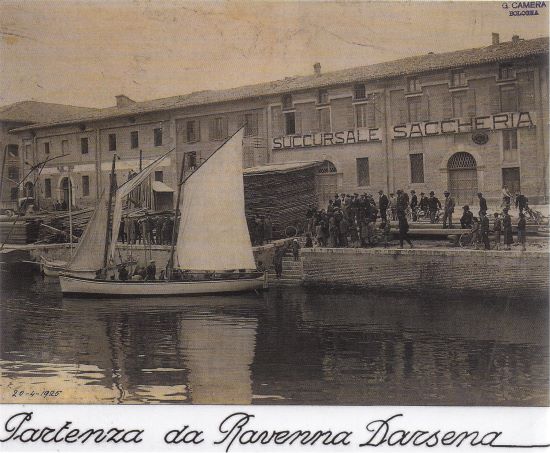The history of the Ravenna Port began during the early Roman Empire, with the construction of an Augustinian port at Classe, the seat of a praetorian fleet geared towards combating piracy.
Written sources describe it as a basin that could accommodate up to 240 ships, but archaeological research has not yet unearthed the precise location of the riverbed, allowing us only to hypothesise about a possible site somewhere between the current VialeRandi Street and the municipal stadium.
Numerous archaeological excavations have revealed the remains of piers and walls, hinting at an intricate network of reservoirs and canals that linked into a large port system, which would have, due to the hydraulic and geomorphological instability of the area, undergone frequent transformations over many centuries. Near the contemporary railway station, there is a smaller port dating from the first half of the 1st century BCE, which could perhaps be interpreted as groundwork for a more ambitious port building project.
Excavations have identified traces of depressions intended for the planting of mooring poles, and this represents the remains of piers and docks from the Augustan period. This was partly connected to a vast trading and craft district that developed in the 5th century CE.
Remains of buildings from the Venetian era testify to the defensive role of the Ravenna Port. Its tower was likely used to spot incoming ships and run the docks, as well as manage and organize the defence against unwanted entrances. The lookout employed technology that was introduced and implemented by the Venetians, who brought with them to Ravenna some of the technical solutions visible in the port infrastructure.

Warehouses have been a key element of the Ravenna Port, in ancient and modern days alike. For a long time, the City of Ravenna was a mainly commercial destination, and it still today boasts the presence of the first warehouses from the 18th century, as well as the late antique trade and craft district known as Classe (Podere Chiavichetta). Thanks to the University of Bologna, the remains of warehouses that stood along the asphalt road circumscribing the port canal have been preserved.
Between the 5th and the 7th century, the Ravenna Port saw the beginnings of mass trade, mainly with Africa and the Orient (Turkey, Palestine and the Aegean Region).
For more information on the history of the city and port of Ravenna, click http://myportheritage.eu/city/ravenna/.

